Miro’s new research report sheds light on engagement, wellness, and relationships following one year of working from home
As of mid-March, 12 months have officially passed since hundreds of millions of people around the world began working remotely to help slow the spread of the newly emerging coronavirus. What many of us thought might be a month or so of “flattening the curve” has now been a full year of working from our homes, with far-reaching effects on our relationships, processes, and work habits.
To better understand those effects, Miro commissioned public opinion firm YouGov to survey 1,000 knowledge workers (equally split between genders and age groups) to get an accurate picture of how things are going. Our survey looked at relationships between our respondents, their teammates, and their families. We also looked at employee engagement, particularly in virtual meetings. Finally, we examined the impact this year has made on employee work/life balance and mental health.
Brad is a writer with a passion for helping teams communicate with clarity, fun, and humor. He brings his past experience as a teacher, video producer, and sales professional to Miro to help teams collaborate across functions. He lives in Boulder Creek, CA with his wife and pets.
Top-level findings:
- Nearly half (49%) of people who are married or in live-in partnerships say that working from home has improved their relationship with their spouse or partner.
- 62% of parents with children under 18 say that working from home has improved their relationships with their kids.
- Over one-third of workers (34%) say they are “somewhat likely” or “very likely” to relocate if remote work becomes permanent in their companies.
- 57% of remote workers say they are more likely to multitask during virtual meetings than they were before the pandemic.
- One-third of knowledge workers (33%) are awake for less than 20 minutes before they begin work in the morning.
- Nearly half (46%) of respondents reported an increase in workload during the pandemic, and just 13% say their workload has decreased.
Key finding #1:
Majority of remote workers say working from home has improved relationship with kids and partners
Before diving too deeply into findings regarding improvements to relationships our respondents may have experienced, we would like to clarify that we wouldn’t begin to call the pandemic positive — for anyone. It’s been a historic tragedy and has had immensely painful impacts on a local and global level. But for the remote-working knowledge workers we surveyed, spending more time at home appears to have translated into new closeness with their live-in families.
Among survey respondents who were married or living with partners, 49% say their relationship improved while working from home, while just 12% say their relationship declined (the rest say there was no change). For parents, the results were even more pronounced. Despite the well-documented challenges of parenting while working from home, 62% of parents with kids under 18 say their relationships had improved, and a large portion of those (43%) say their relationships had improved a great deal.
Give online meetings that in-person energy
The freedom to work remotely would inspire people to move closer to their non-cohabiting family. Nearly half (47%) of survey respondents say they’re at least somewhat likely to relocate to a different region if remote work is made permanent, with the number one reason being “to be closer to family and friends.”
Other relationship findings:
- Nearly one-third (32%) of parents with kids over 18 have experienced improvements in their relationships with their kids. Just 12% reported the relationships have declined.
- 28% of respondents say their relationship with their manager has improved while just 12% say it’s gotten worse.
- Slightly more people say relationships with colleagues outside their team have declined (22%) than improved (21%), which may indicate the watercooler conversations that are key to driving innovation in firms are yet another victim of the pandemic.
Key finding #2:
Virtual meetings are failing to drive sustainable levels of engagement
Virtual meetings aren’t new, but the pandemic changed the paradigm of work so that all real-time collaboration must be done virtually. But our survey found these meetings frequently suffer from distracted attendees, and over half (57%) say they are more likely to multitask during virtual meetings while working from home than they were before the pandemic.
The top 5 distractions during meetings:
- Email (49%)
- Background distractions in the home (e.g., kids, pets, other noises) (30%)
- Social media (e.g., Facebook, Twitter, Instagram) (30%)
- SMS and personal messaging (e.g., WhatsApp, Messenger) (25%)
- Workplace messaging (e.g., Slack, MS Teams) (21%)
We’re also distracted by ourselves. A quarter of our respondents say they spend between 20% and 50% of a video call looking at their own preview box rather than the people they’re speaking with. Women were 64% more likely than men to say they look at themselves at least 50% of the time (31% of women). We don’t chalk such differences up to vanity, but rather differences in pressure that women may feel to appear a certain way in a professional setting — even if that setting is virtual.
49% say their relationships improved while working from home
Women may also feel more pressure to be engaged during meetings. Thirty-two percent more men than women say they come clean when getting caught spacing out, and 36% more women than men say they have sent backchannel messages to other attendees to find out what they missed.
Additional findings about virtual meetings:
- 56% of respondents say they miss the feeling of engagement from in-person meetings.
- The top reasons people turn their cameras off during virtual meetings are “I didn’t want other attendees to see I was multitasking” (38%), “I didn’t feel good about the way I looked” (38%), and “to save bandwidth” (30%).
- 12% of respondents say they’ve been distracted by video content like YouTube, Netflix, or TikTok during virtual meetings.
Key finding #3:
Working from home is challenging routines
Without a commute or the need to to appear presentable at an office, remote work doesn’t require the same degree of routine as in-office work. Our survey revealed that workers are taking advantage of this new flexibility.
One-third of respondents begin working within 20 minutes of waking up in the morning, with about a quarter of millennials (23%) saying they typically first check in with work while still in bed. Just one in five of our respondents say they are awake for at least an hour before starting work.
Other habits findings:
- 28% say they are more likely to run personal errands during the workday than they were before the pandemic. 20% say they were less likely.
- Older workers are more likely to continue to check their email into the night following normal work hours. 23% of baby boomers say they check their email at least five times at night, which is more than twice the amount of millennials who say the same.
Key finding #4:
Disconnection from workplaces might be challenging our mental health
Despite the improvements many have seen to relationships while working from home, one-third of respondents say their mental health declined during this period, which is 29% more than those who say their mental health had improved. This number is surprising because respondents were 86% more likely to say their work/life balance had improved.
57% say they are more likely to multitask during virtual meetings
Approximately as many people say their physical health has declined as say it has improved (30% vs. 31%).
Other mental health findings:
- 29% of respondents say they question their own accomplishments more than before the pandemic, compared with just 13% who say they feel more confident.
- 20% feel more likely to be worried their colleagues view them as frauds.
- 32% of respondents say remote work makes it difficult to share positive feedback with their teams.
35% say their mental health declined as a result of the pandemic
See the full report
Understanding the effects of remote work on your team is a challenge, and no two teams are alike. Our full survey report includes our complete set of data that can help shine new light on the wellness and engagement of your workforce. You can download the survey here:
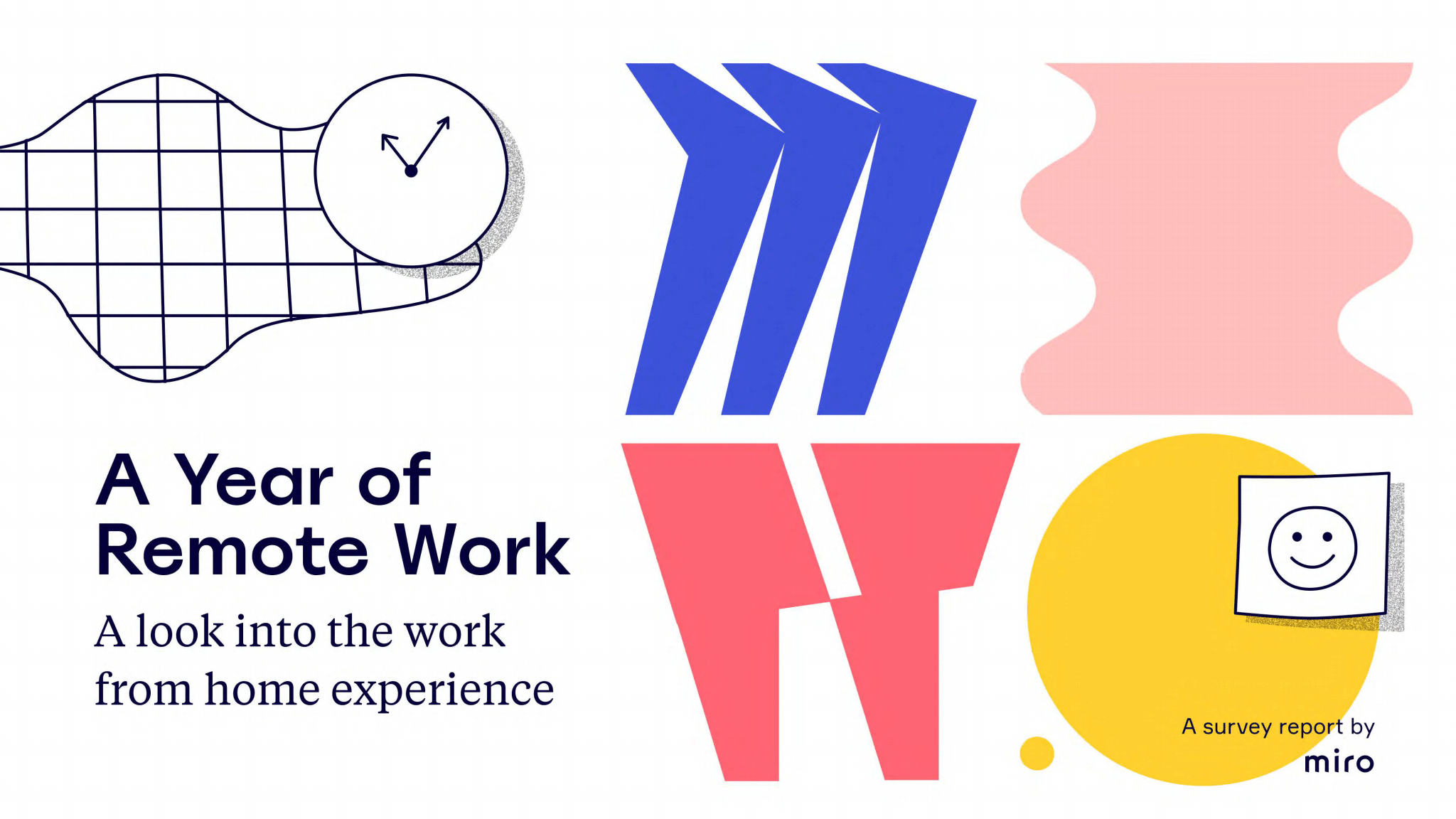

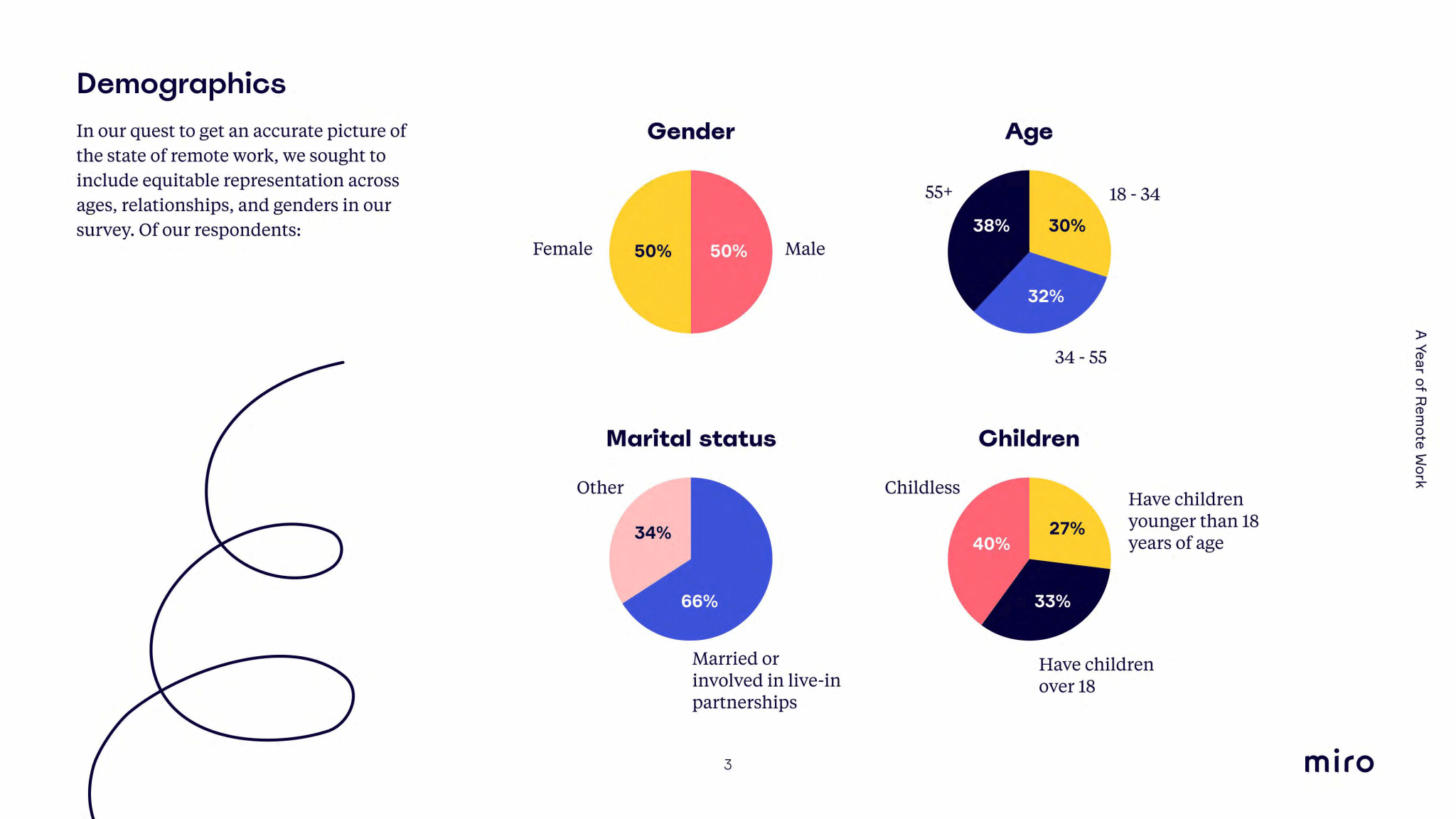
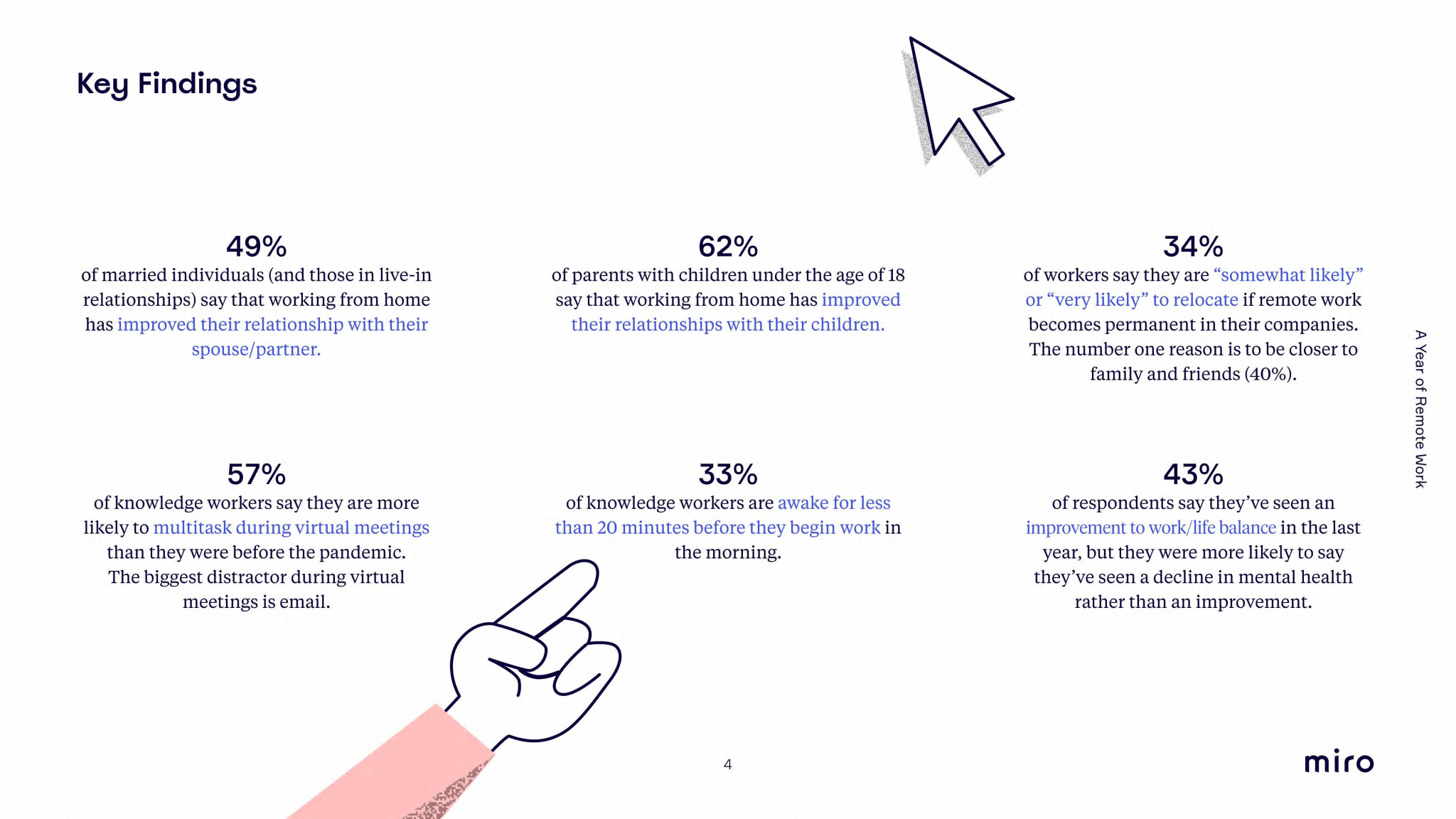
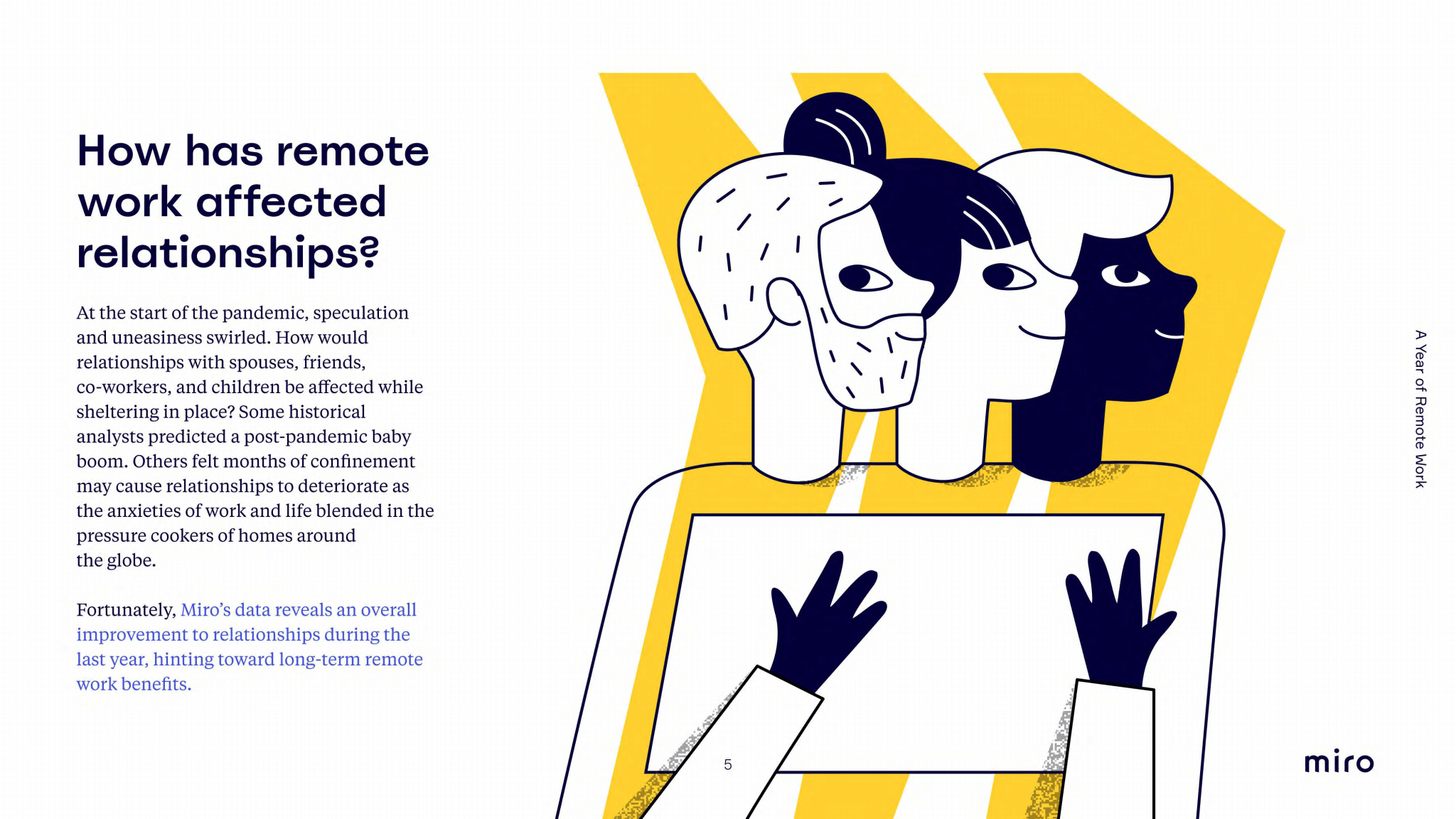
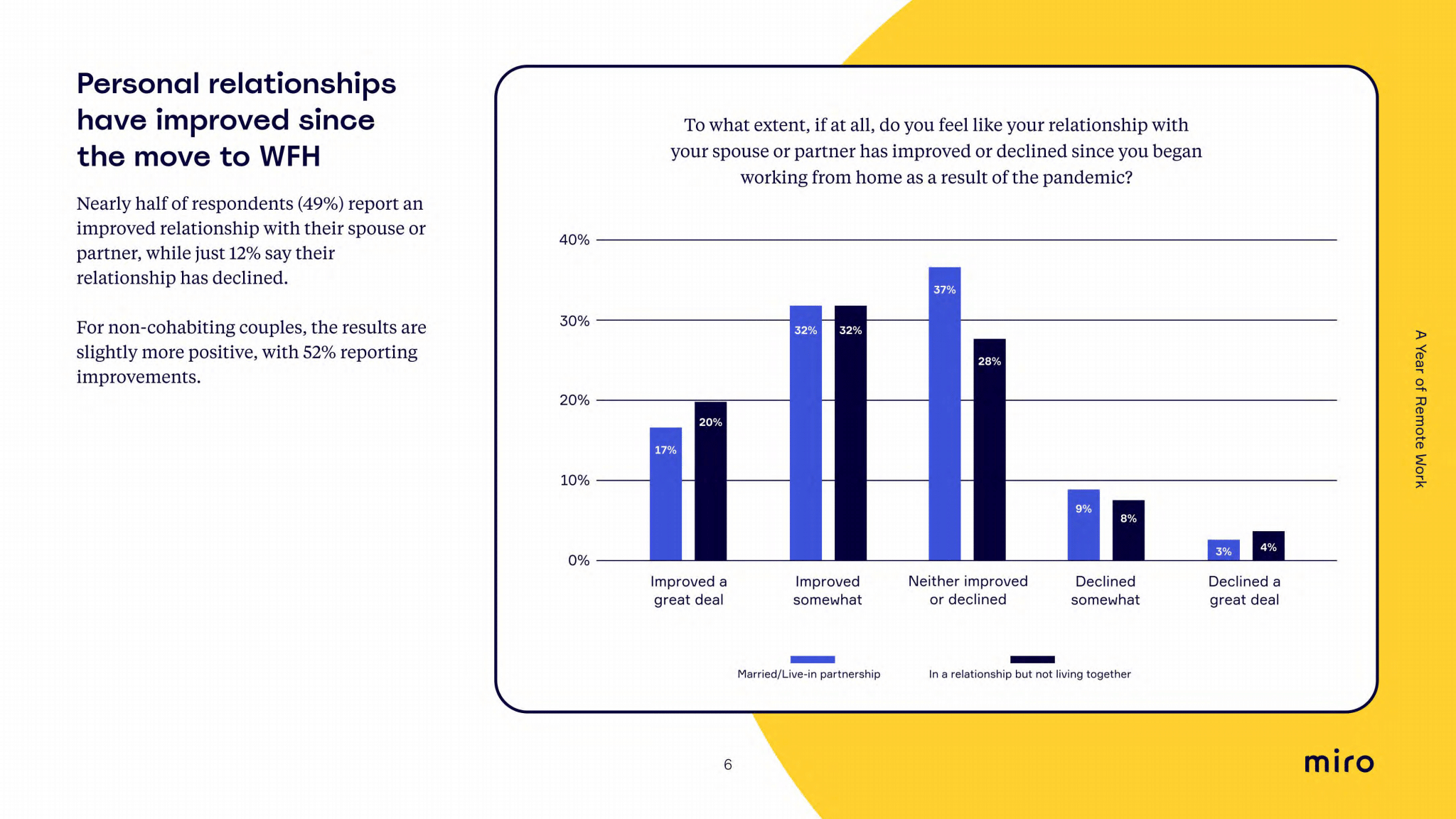
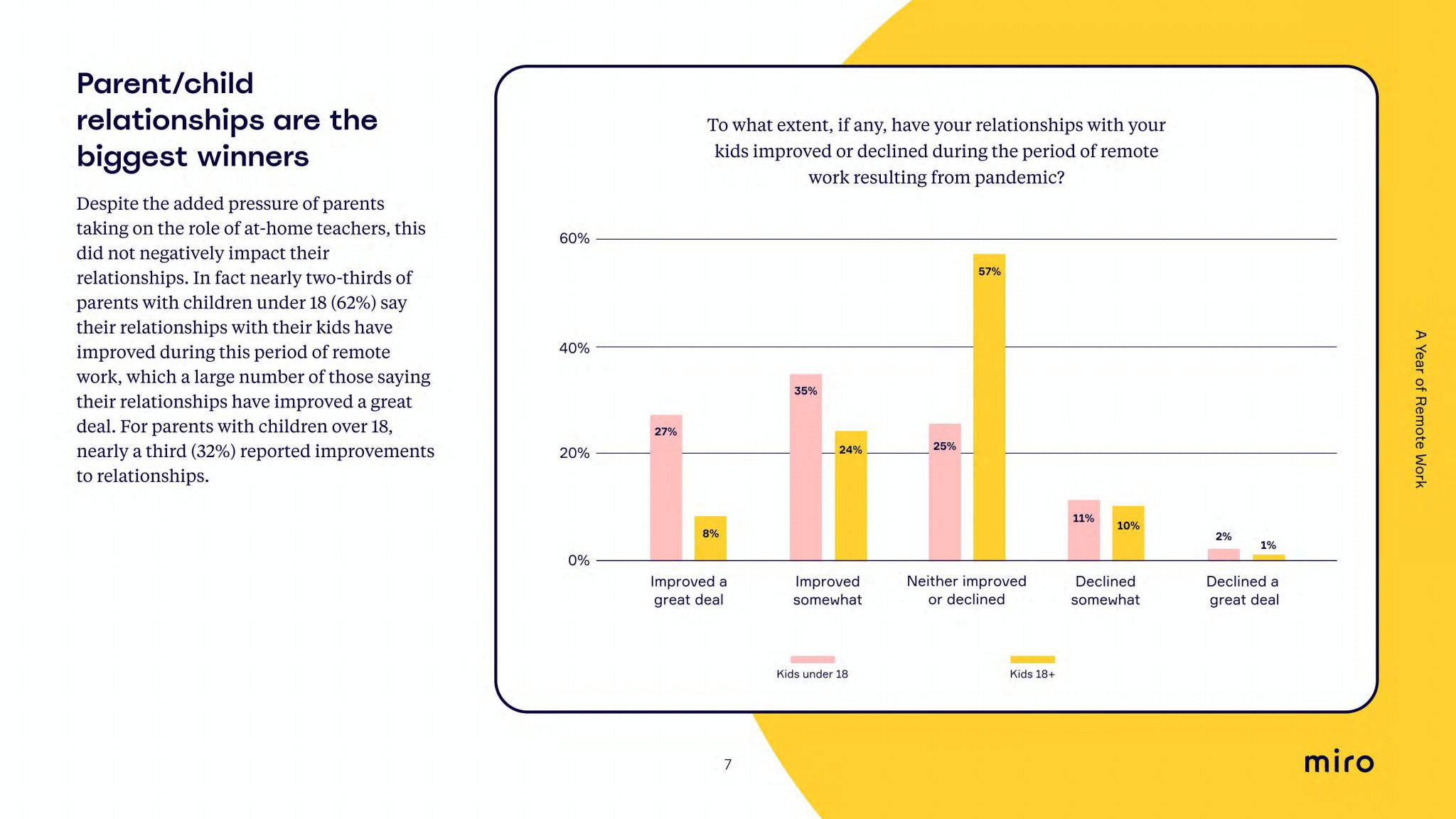
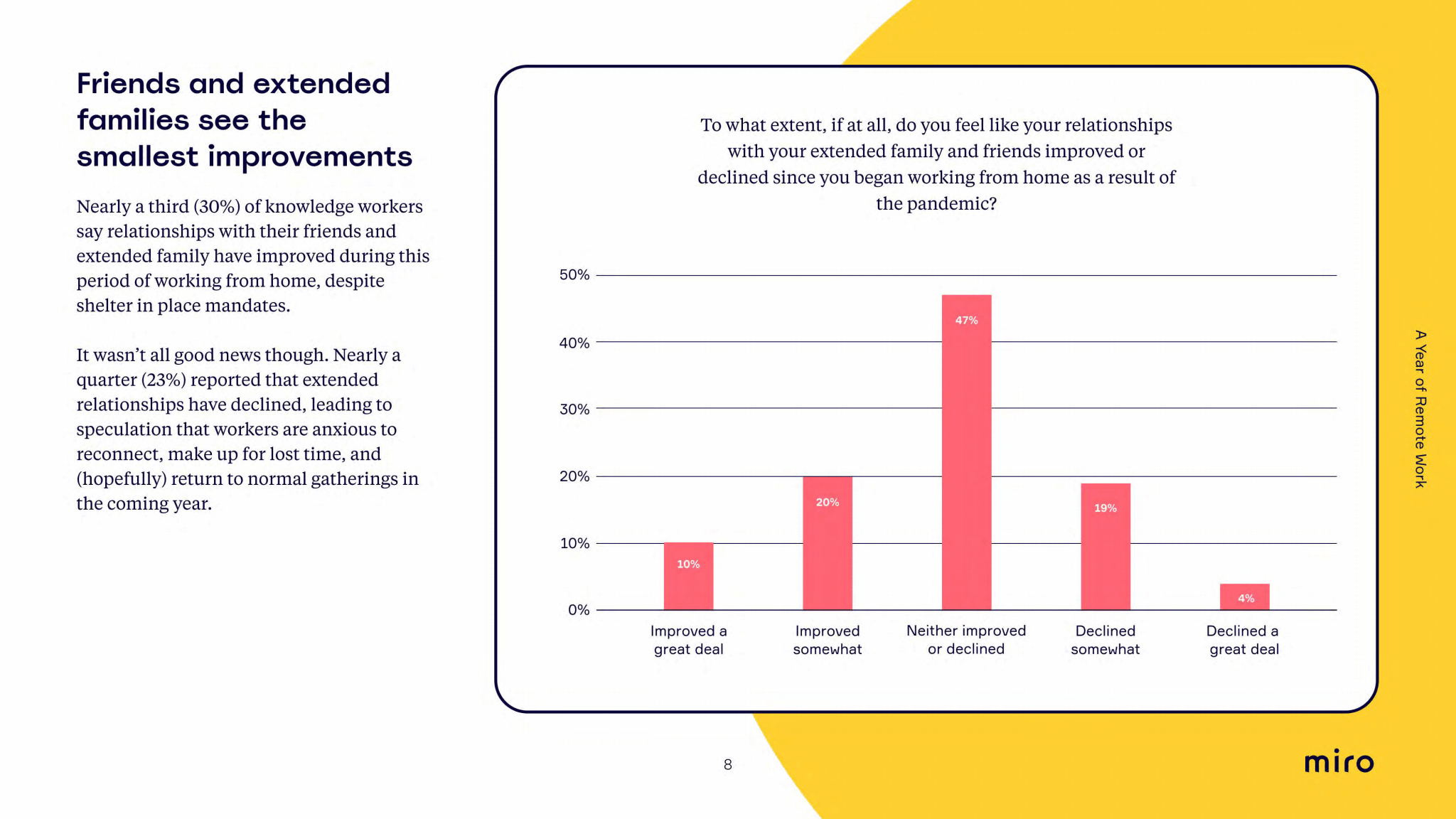
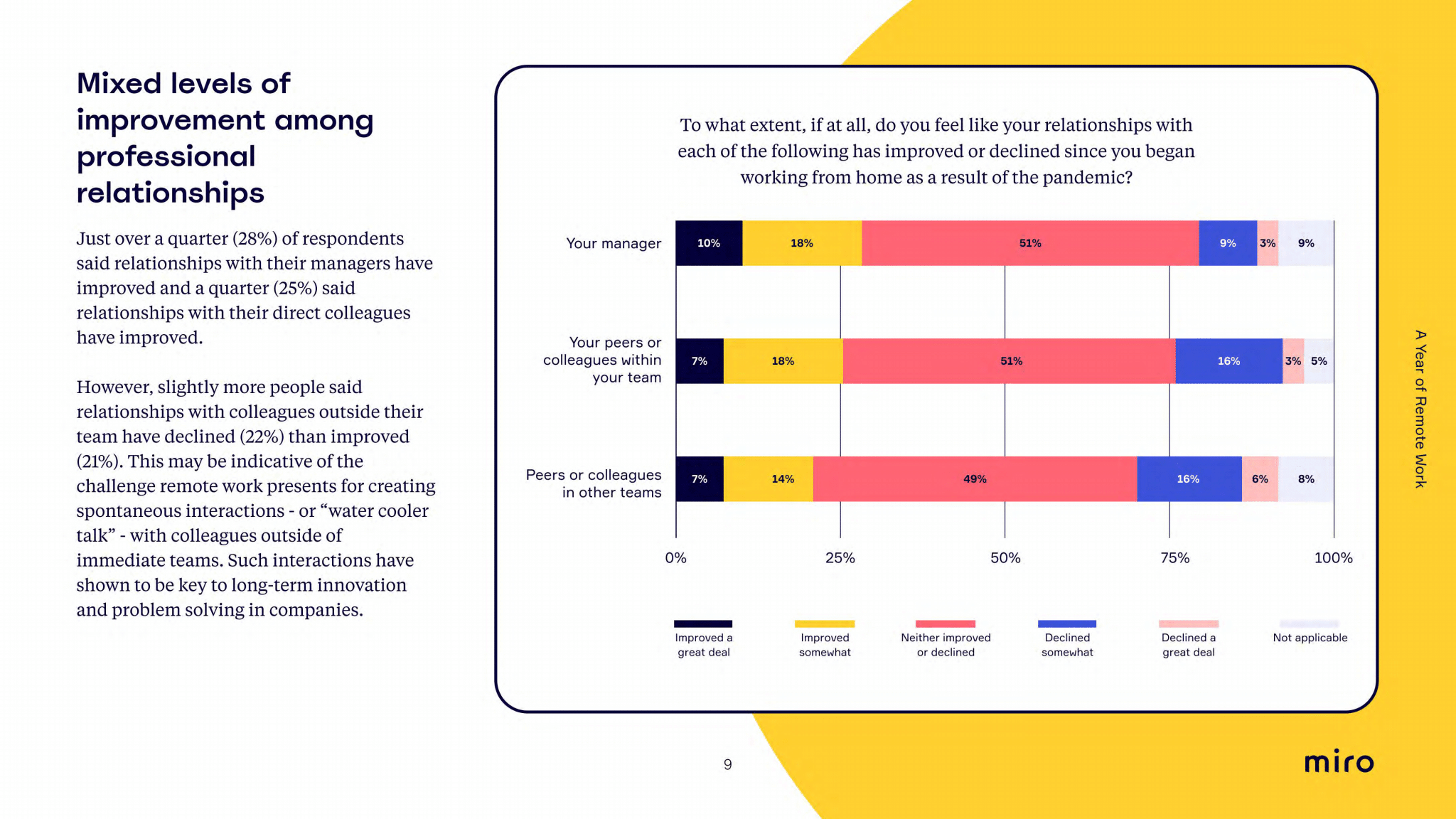
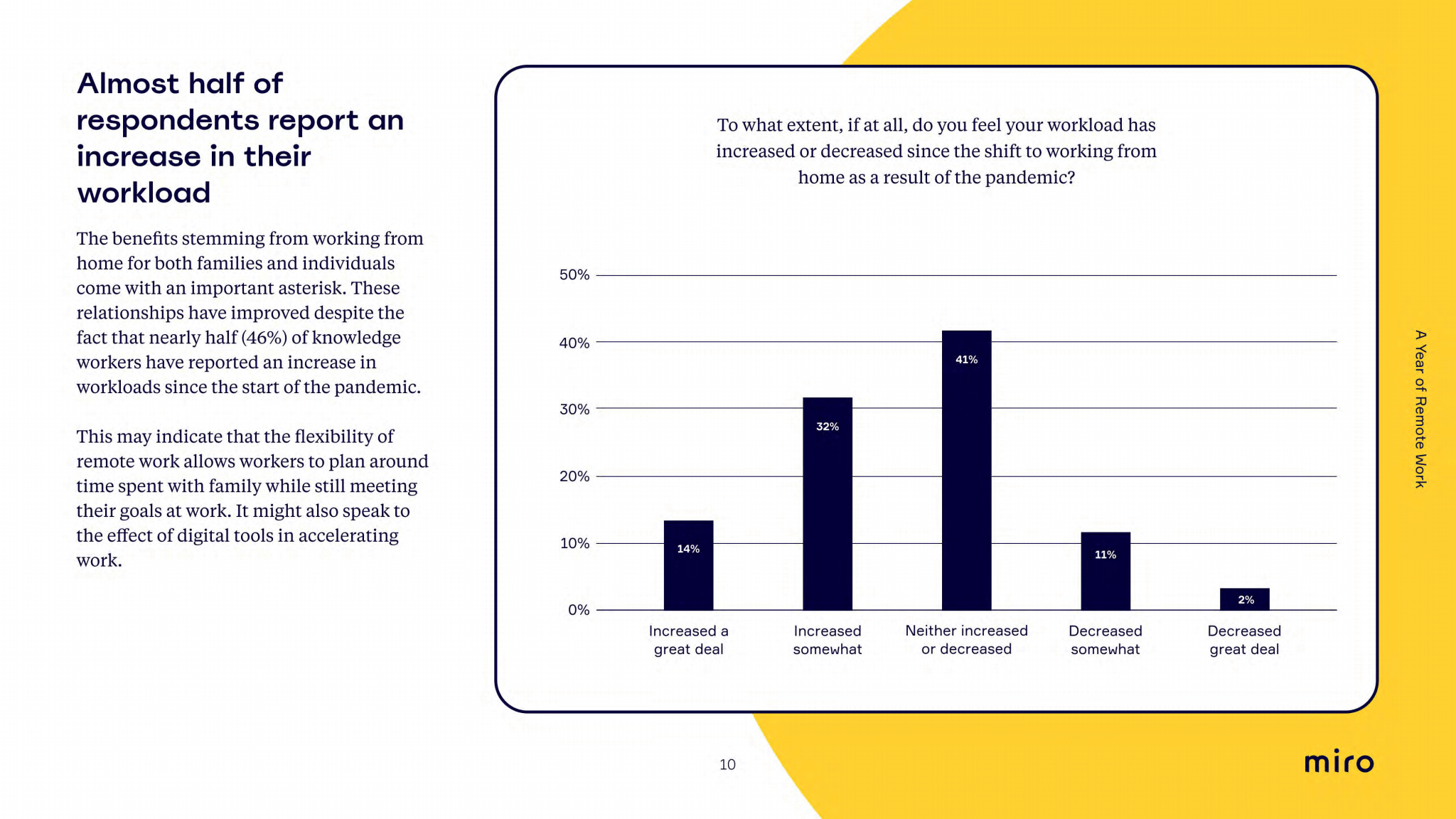
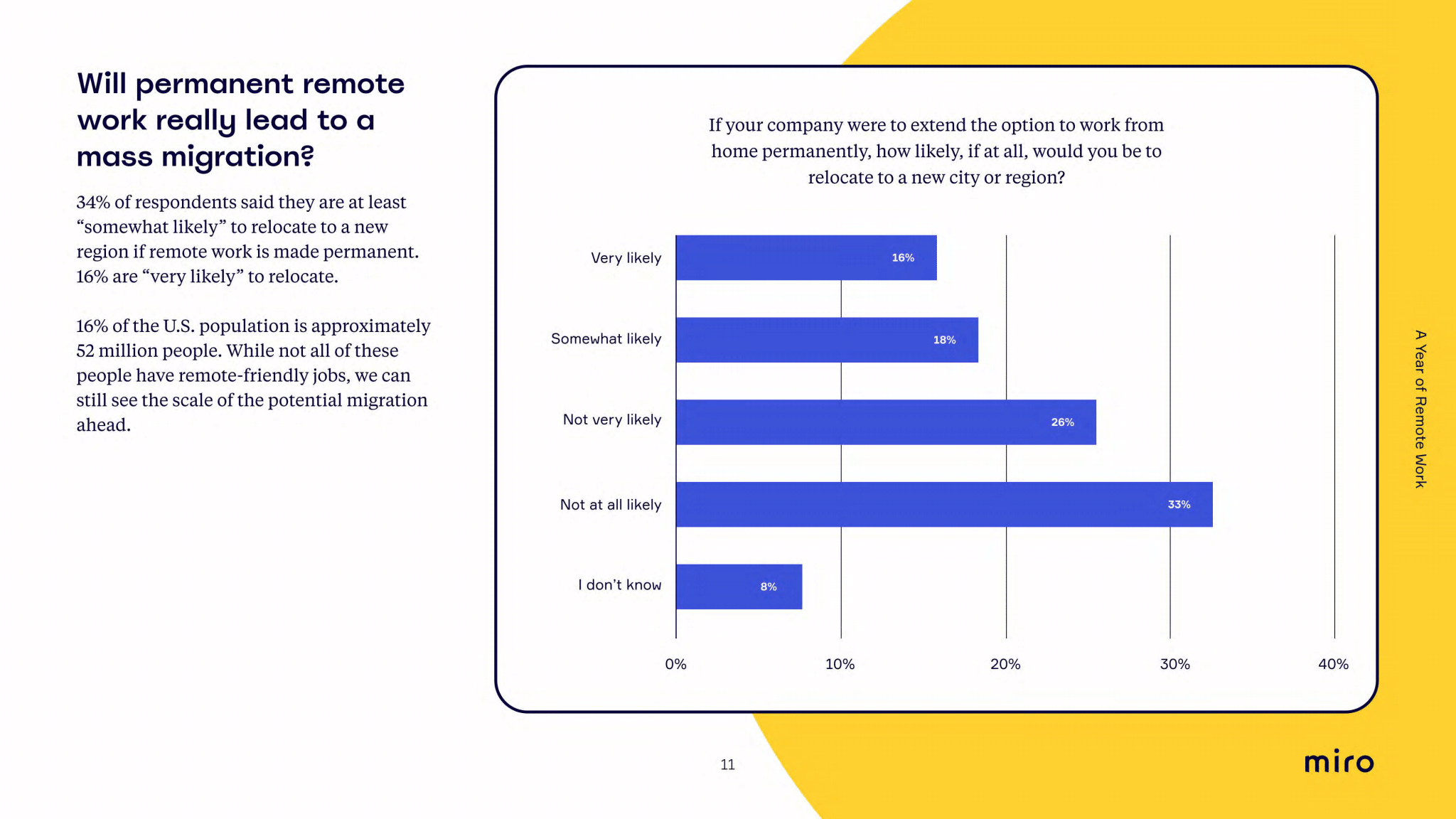
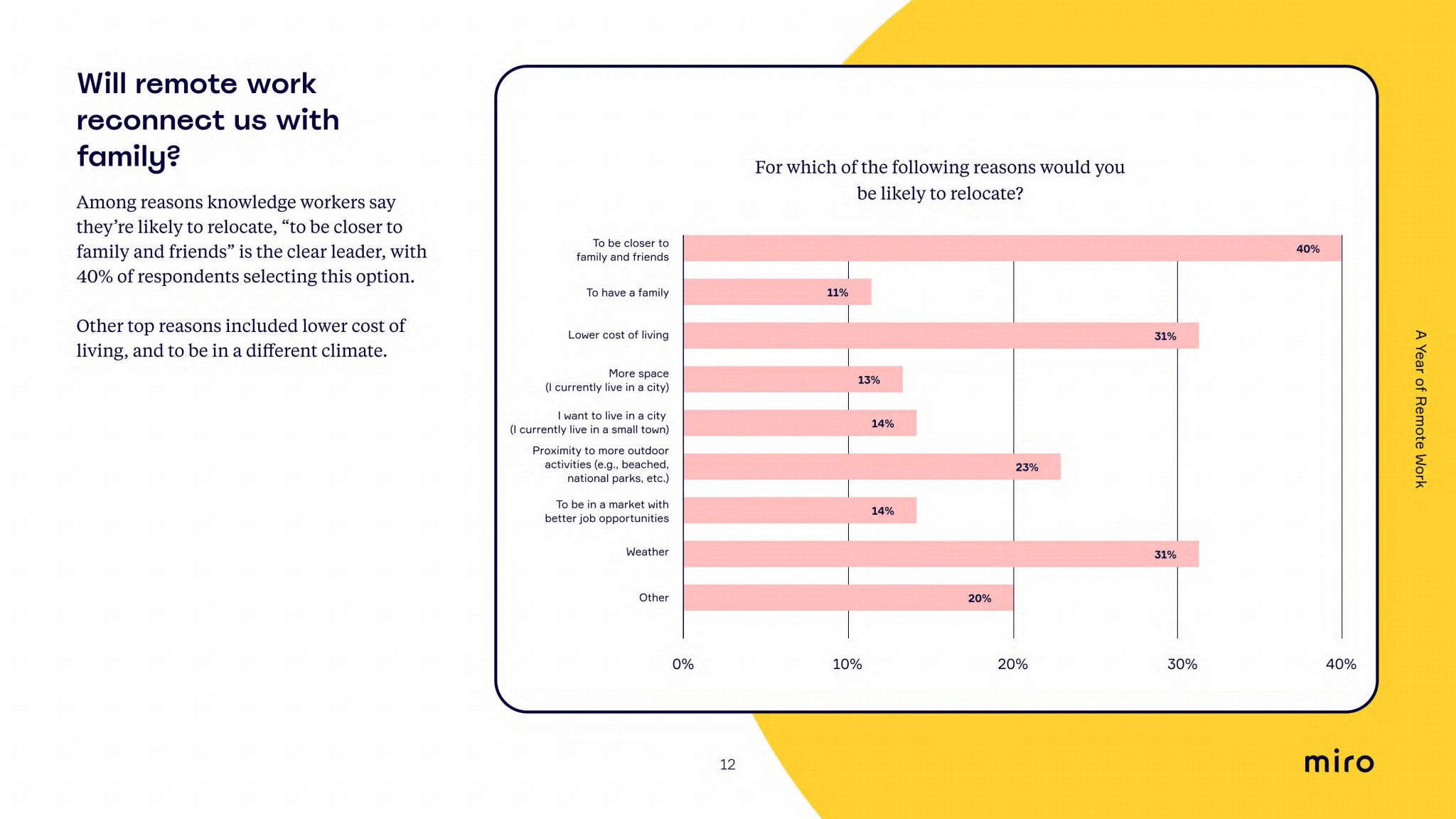
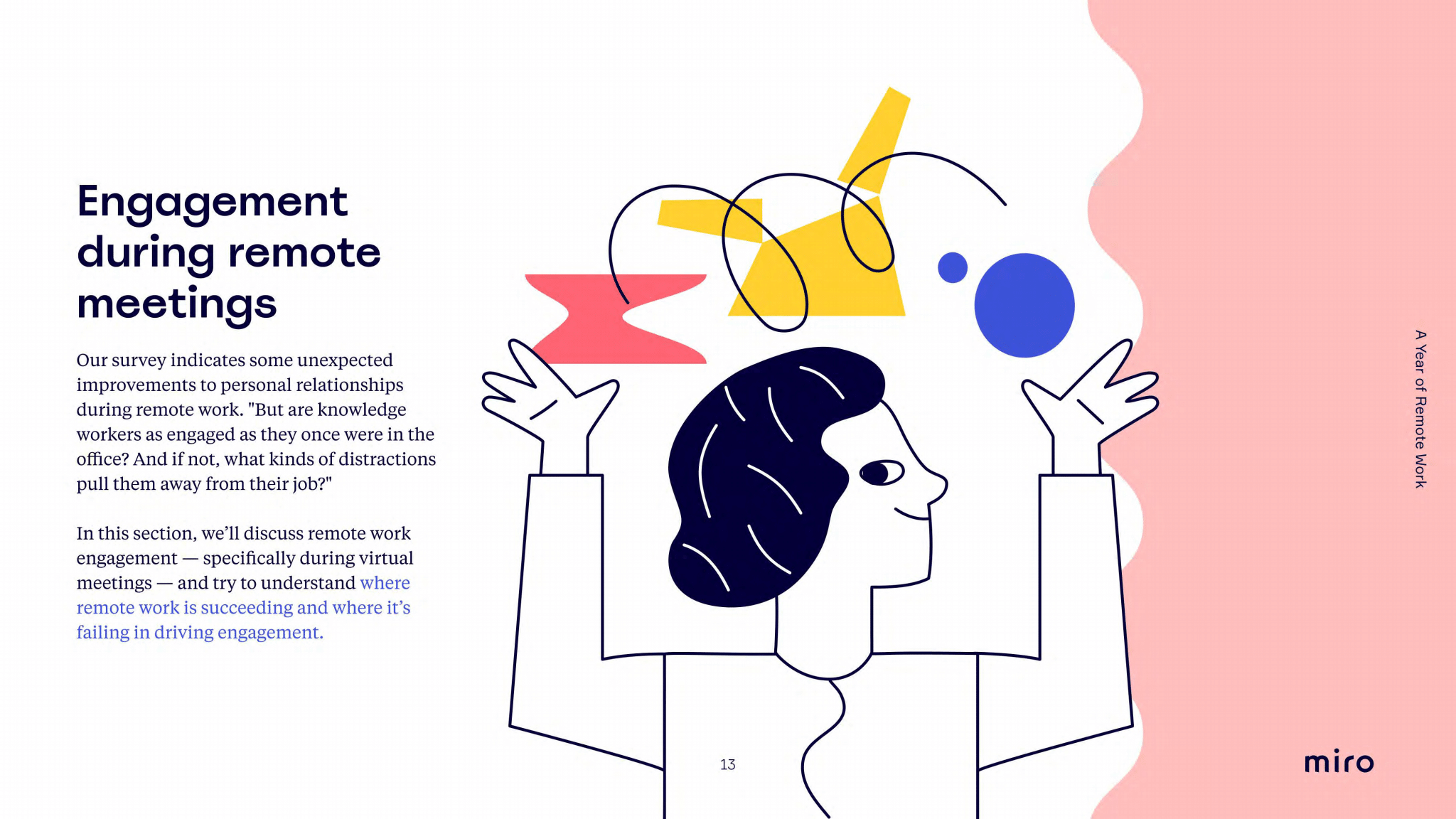
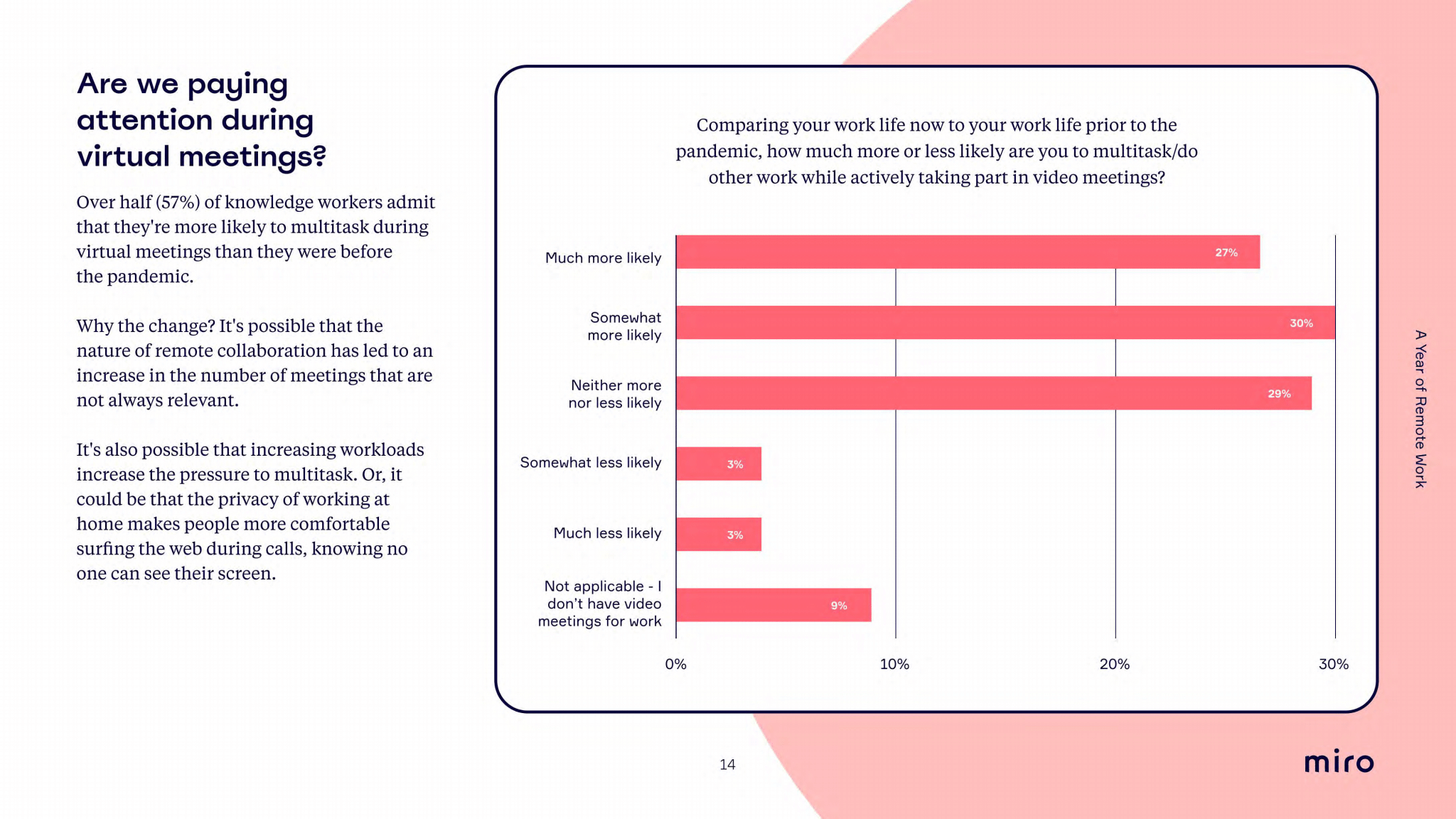
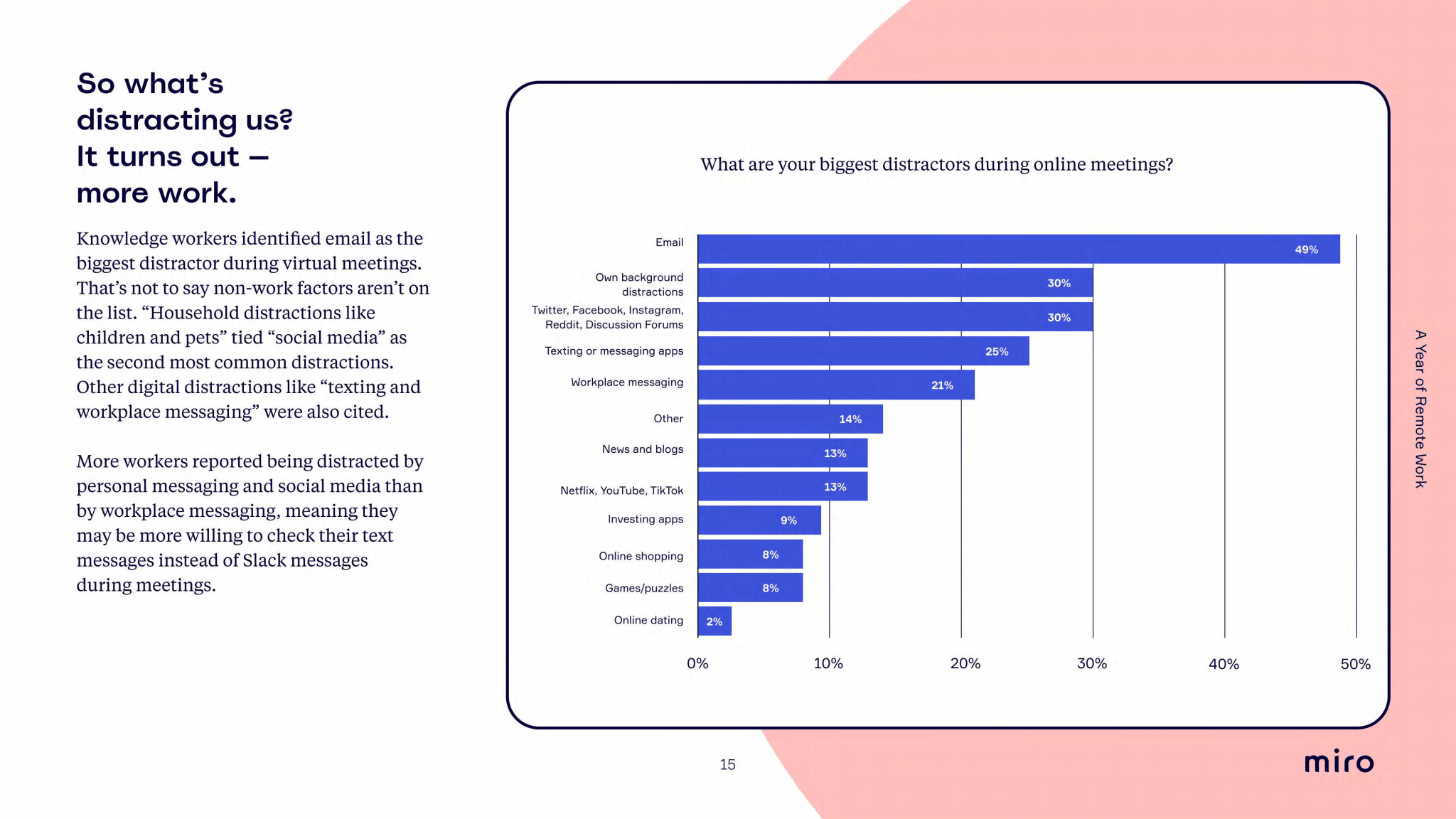
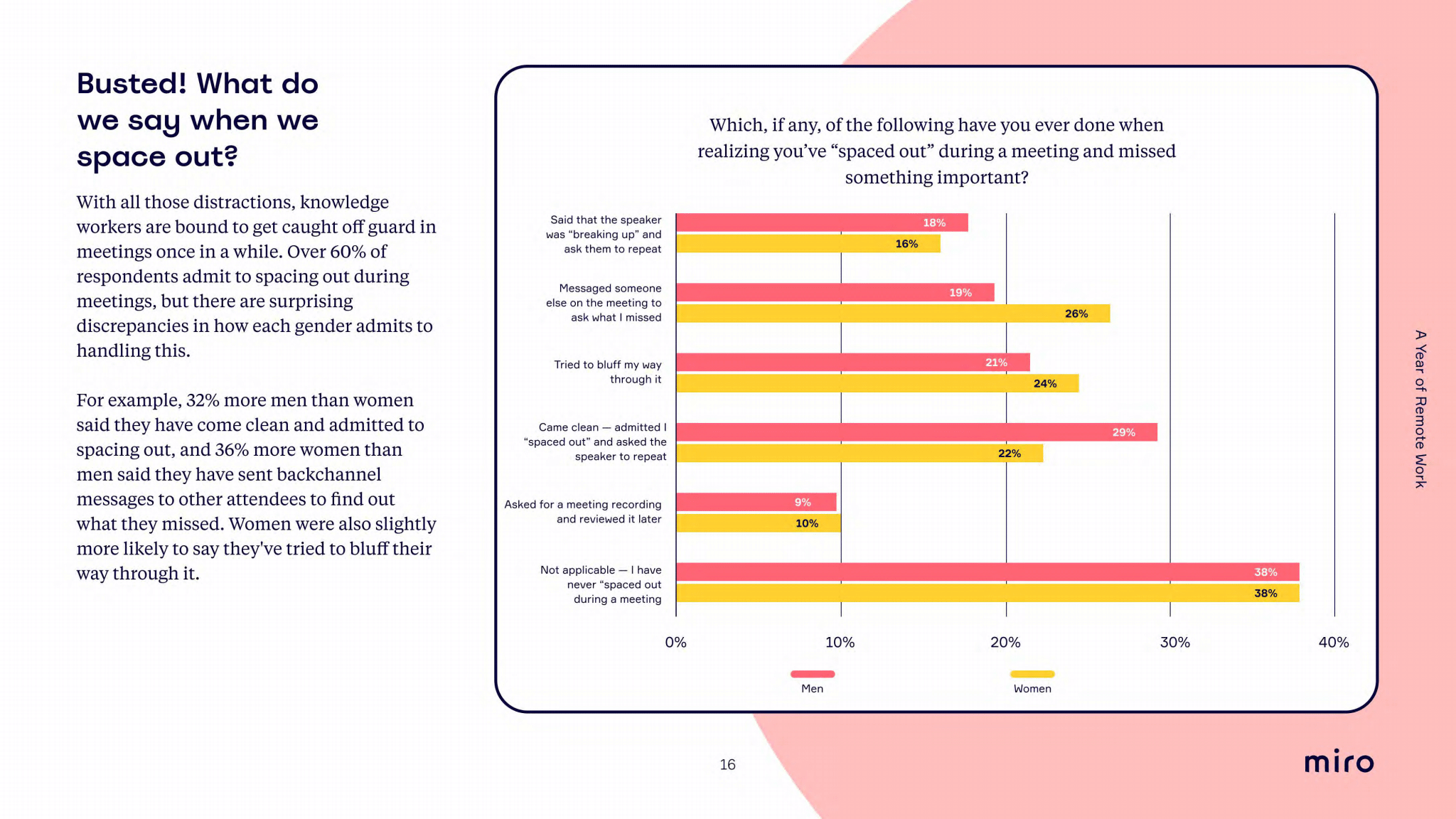
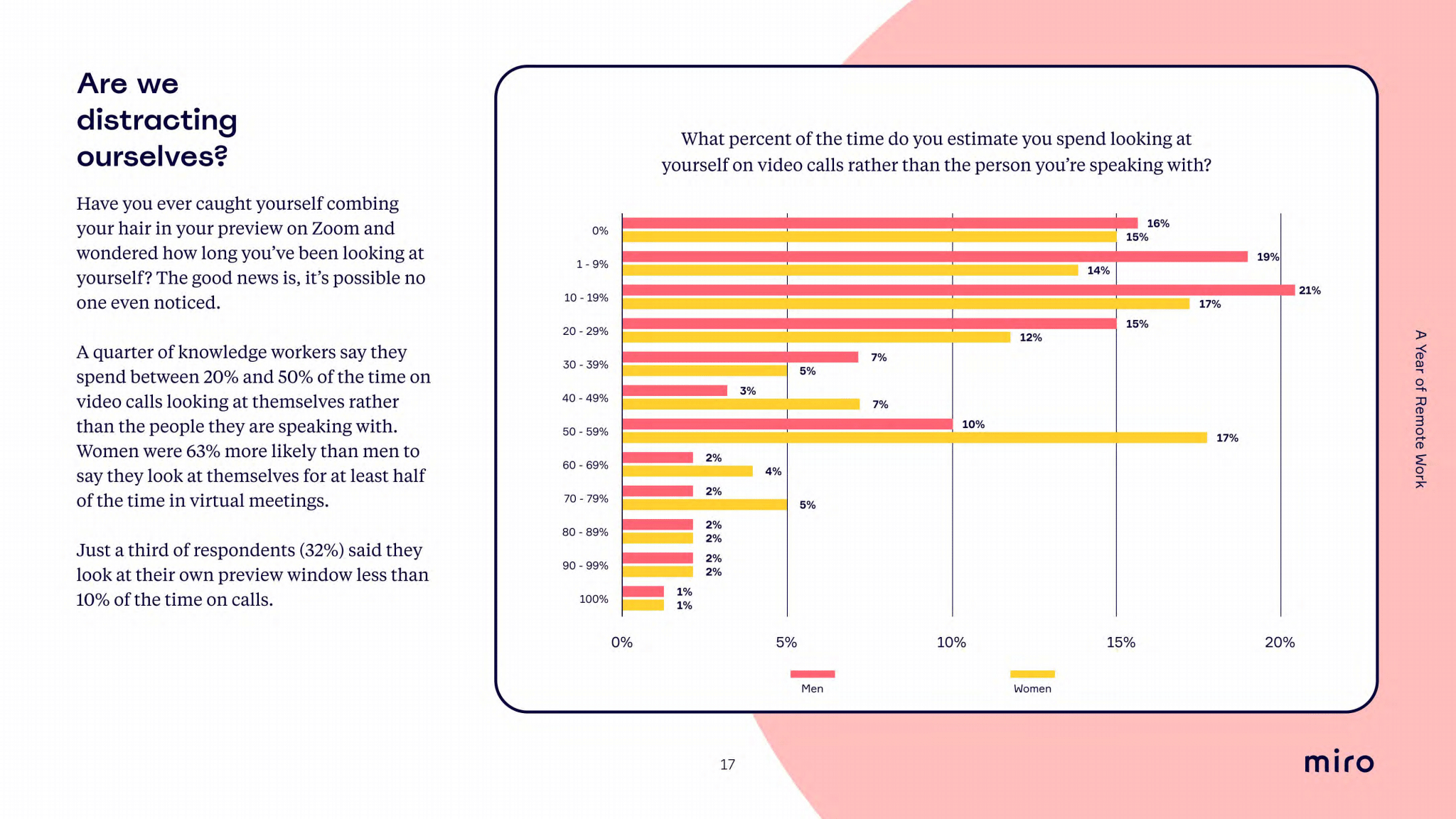

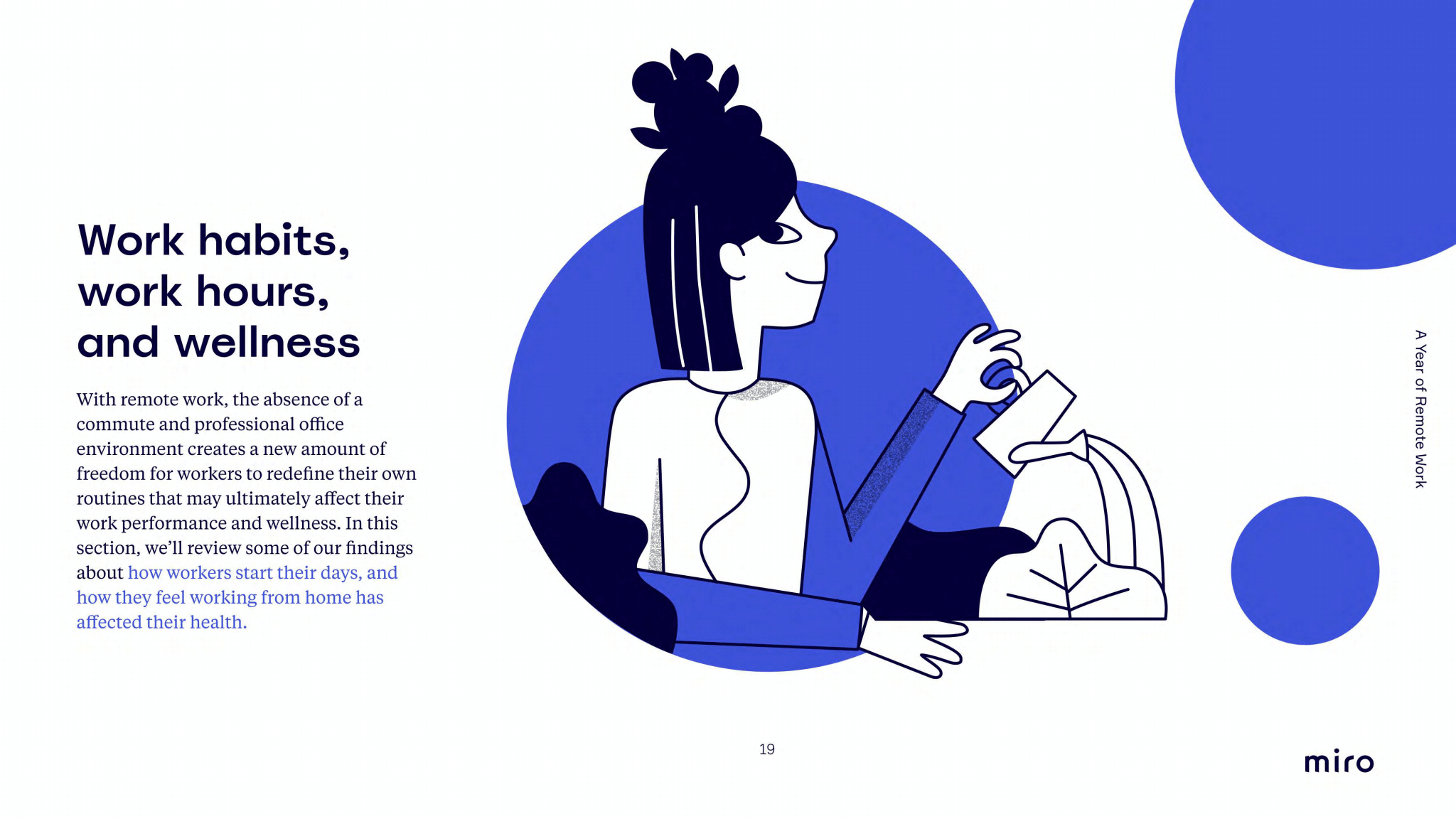
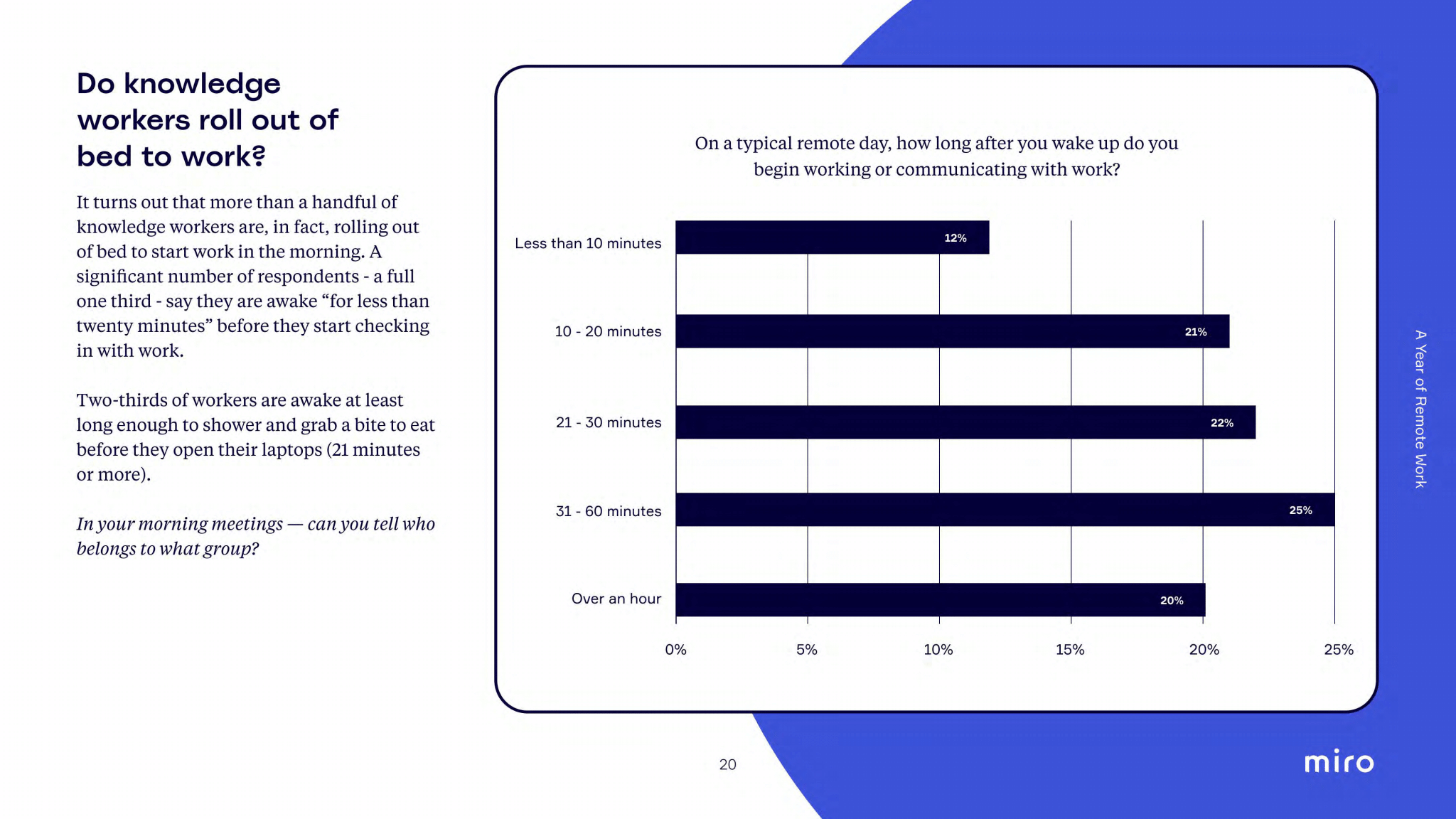

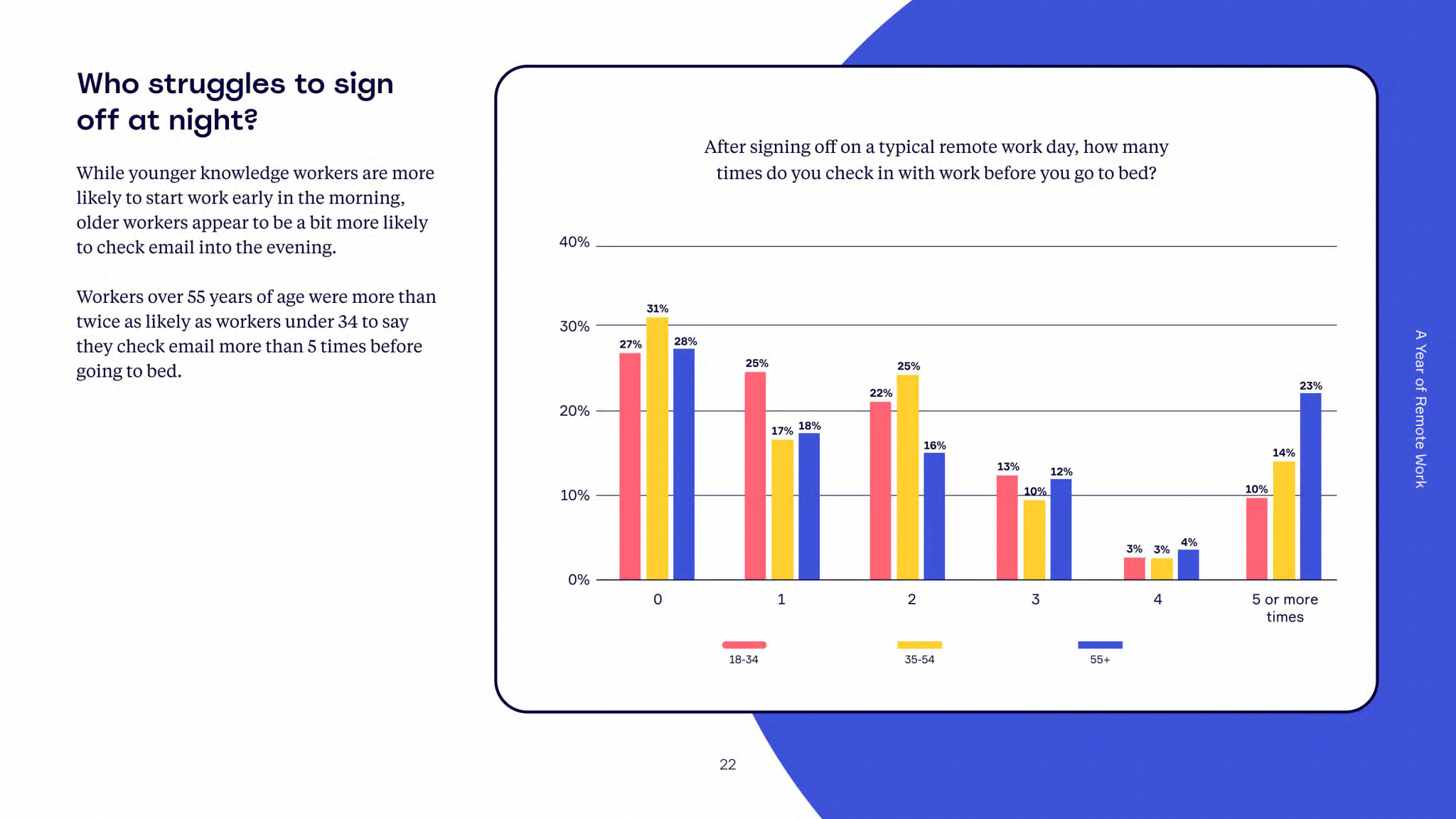
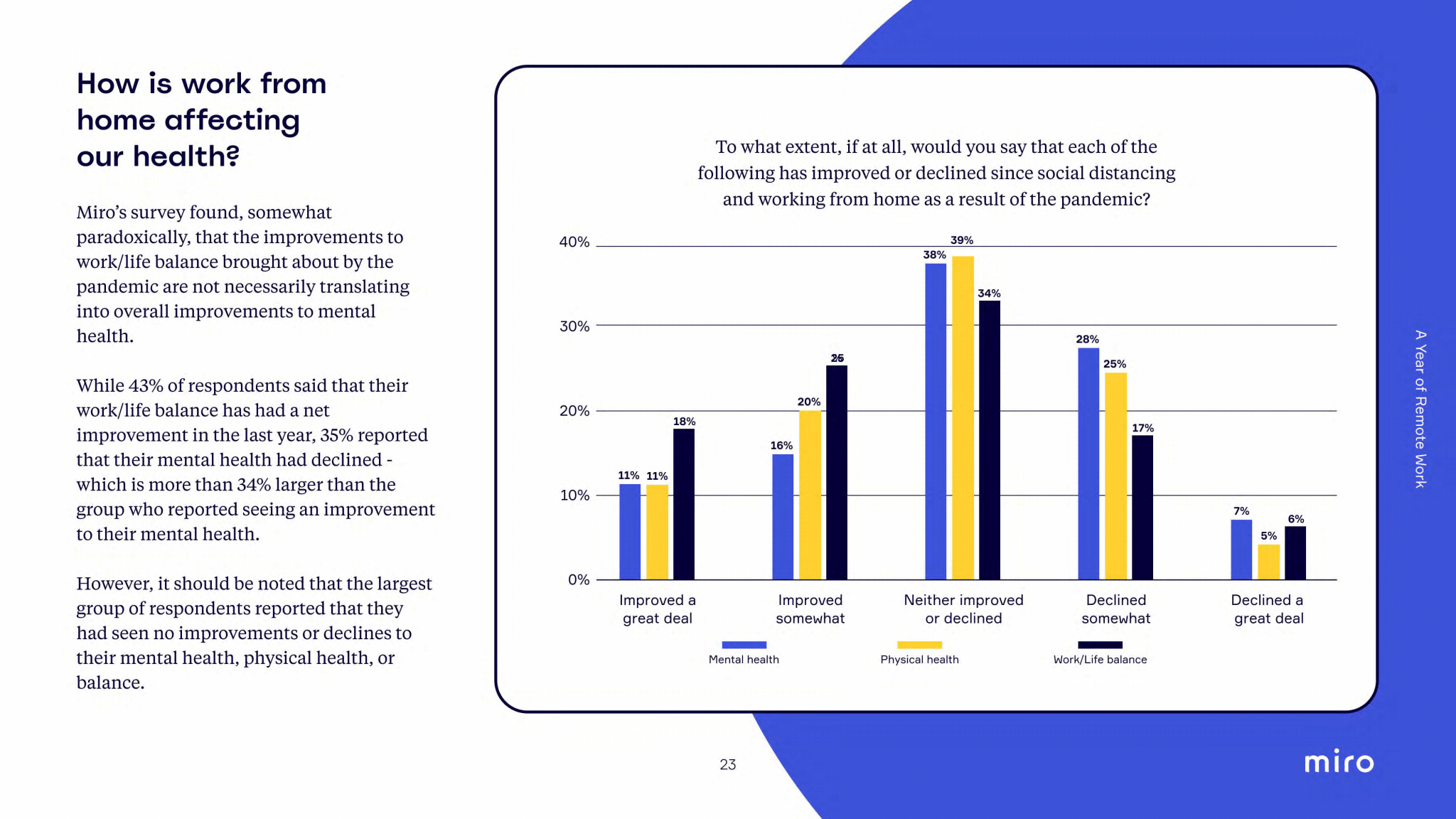
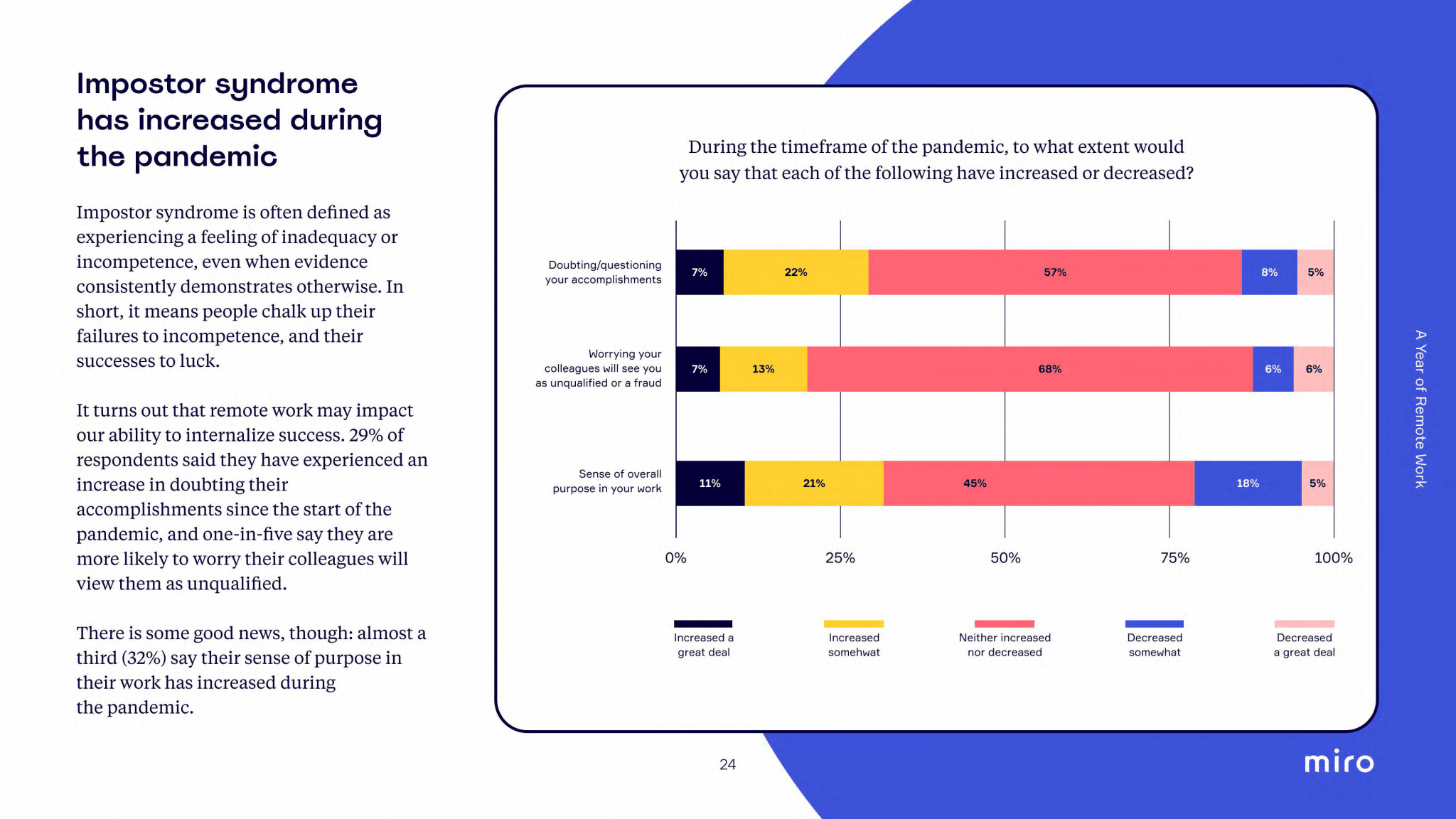
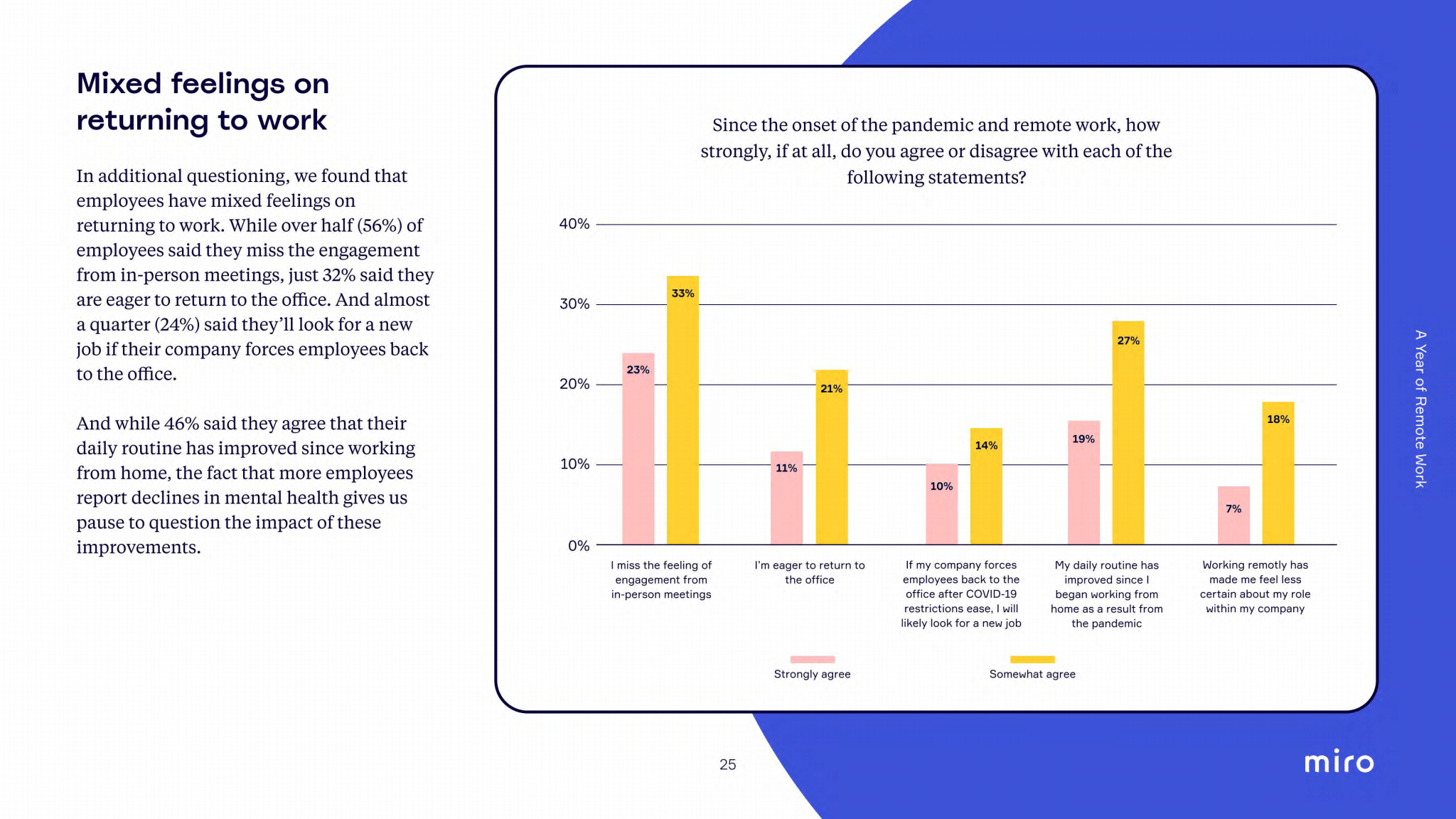

Additional resources:
- Team building templates in Miroverse: Fight the isolation that can occur during periods of remote work with creative ideas for team building games and activities you can host directly within Miro.
- Remote Team Meetings Guide: Find tips and strategies for designing and hosting meetings that engage your attendees, reduce their distractions, and help them bring forth their best ideas.
- Running workshops in Miro course: From introducing new technology to keeping everyone on-track, there is a lot to consider when facilitating a remote meeting. This course will show you how to create a seamless experience for your remote participants, whether they’re seasoned pros or brand new to Miro.




